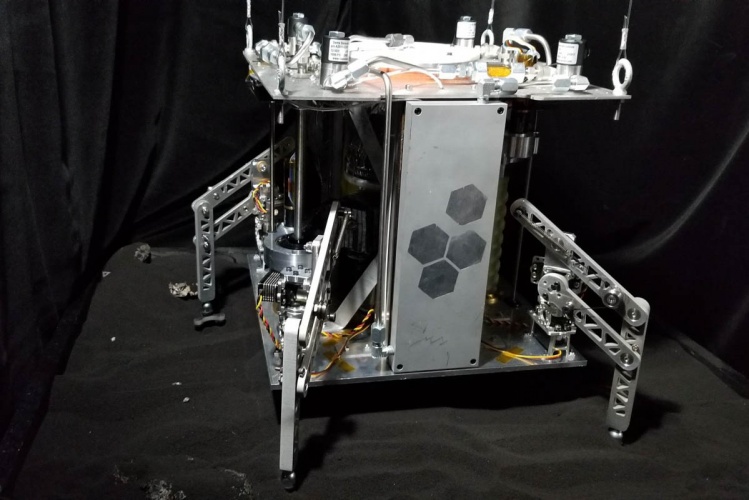
Known as WINE (World Is Not Enough), the microwave-sized vehicle could potentially be used to explore space for valuable minerals, launching between asteroids and other bodies with weak gravity. Its design was developed by Phil Metzger, a planetary research scientist from the University of Central Florida, with the prototype built by Honeybee Robotics of Pasadena, California. The project is part of NASA’s Small Business Technology Transfer programme.
“WINE was designed to never run out of propellant so exploration will be less expensive,” said Metzger. “It also allows us to explore in a shorter amount of time, since we don’t have to wait for years as a new spacecraft travels from Earth each time.”
At the heart of WINE is an In Situ Resource Utilisation (ISRU) system that captures and extracts water which is stored in a steam thruster tank. To convert the water into a steam propellant, the asteroid hopper uses heat generated by its electronics system with additional power coming from solar charged batteries. For more distant exploration where minimal solar power is available, small radioisotopic decay units could be used to power the vehicle’s mining.
According to Metzger, he spent three years developing the technology to make WINE a reality, including developing new equations and a new method of computer modelling for steam propulsion. The prototype was successfully tested by Honeybee at its California facility on December 31 2018, extracting water from simulated space regolith and using the resulting steam to achieve liftoff.
https://twitter.com/kriszacny/status/1079810071540817925
“WINE successfully mined the soil, made rocket propellant, and launched itself on a jet of steam extracted from the simulant,” said Metzger. “We could potentially use this technology to hop on the Moon, Ceres, Europa, Titan, Pluto, the poles of Mercury, asteroids — anywhere there is water and sufficiently low gravity.”




Glasgow trial explores AR cues for autonomous road safety
They've ploughed into a few vulnerable road users in the past. Making that less likely will make it spectacularly easy to stop the traffic for...